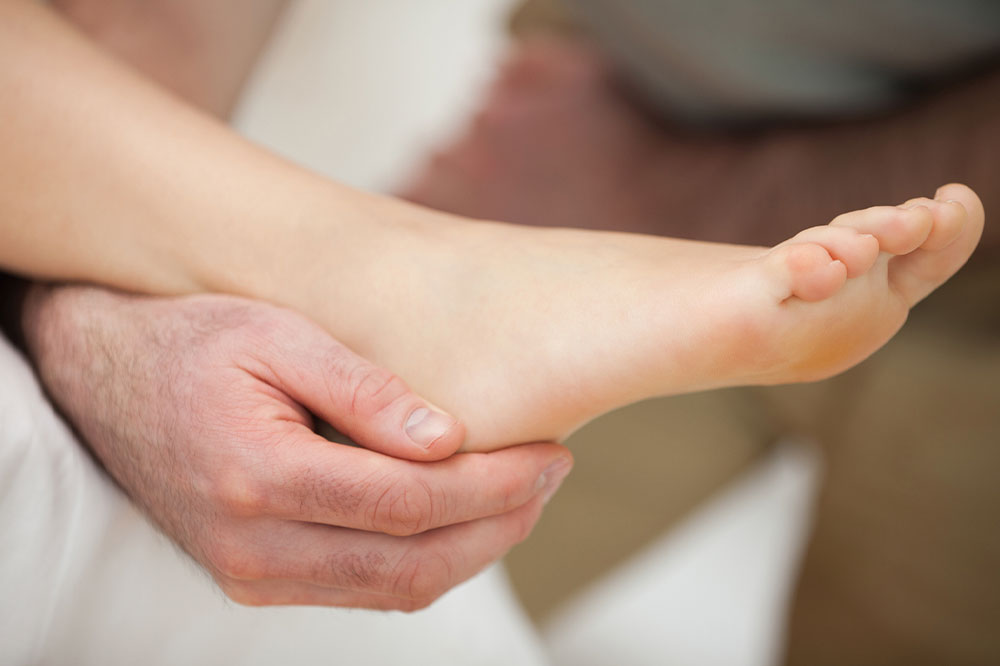
Ankle dislocation – Causes, diagnosis, signs, and more
A joint dislocation refers to an abnormal separation between the joint bones. If this happens to your ankle joint, it is called the ankle dislocation. The ankle joint contains three bones – the talus, the tibia, and the fibula. Primarily, the ankle joint helps in moving your foot up and down. Underneath this is another ankle joint, or the subtalar joint, that lets you move your foot from side to side.
The foot has strong ligaments that hold these bones in place. A severe injury can tear or pull the ligaments and move them, creating an abnormal space between one or more bones. Typically, the ligaments are solid and do not tear or pull away easily. In most cases, ankle dislocations occur with a break in one or more of your ankle bones, but they may also happen without a bone break with a severe ankle sprain.
Causes
Ankle dislocations occur when a joint endures an unexpected or unbalanced blow. It primarily occurs after a high-impact fall or a harsh hit to an area and tears one or more of your ankle ligaments. When these ligaments are not present to keep your bones in place, the ankle bones separate. Sadly, an ankle dislocation amplifies your risk of future dislocations too. Studies suggest that severe trauma is one of the primary causes of ankle dislocation. But some other factors also add to your risk of experiencing joint dislocations. These include:
- Sports with high impact or involving contacts, such as gymnastics, basketball, wrestling, hockey, and football
- Increased vulnerability to falls, prevalent among older individuals (aged 65 and above) due to limited mobility and children playing without supervision
- Specific genes can contribute to lax ligament development, thereby elevating the risk of joint injuries and dislocations.
Who is at risk?
Anyone, regardless of their age, may have ankle dislocations, but your risk amplifies if:
- You have Ehlers-Danlos syndrome, a condition that makes your ligaments lose
- You have had an abnormal ankle since birth
- You indulge in intense athletic activities
- You have had a dislocation, fracture, or sprain in the past
Symptoms
The ankle injury might trigger the following symptoms:
- Sudden and intense pain
- Swelling and discoloration (bruising)
- Tenderness or sensitivity when touched
- Inability to bear body load on foot
- Difficulty in moving the ankle
- Noticeable deformity in the appearance of the ankle
- Bone protruding through the skin
Diagnosis
When your healthcare expert suspects an ankle dislocation, they may ask you to flex your toes and move your ankle or leg. If their doubt intensifies, you will have to undergo tests like CT scans, MRI, X-ray, or ultrasound wherein they can confirm an injury or dislocation. Sometimes, you will take a contrast liquid to help with the diagnosis. It produces better images of your ankle. If you have earlier had any allergic reaction to this contrast liquid, inform your doctor. Further, never enter the MRI room with anything metal, as it may cause a severe injury. Tell the professional when you have any metal on the body.
Treatment options
Doctors may prescribe different treatment options for ankle dislocation. These may include:
Surgery
Doctors may even suggest surgery as a treatment option for ankle dislocation. It can help repair damaged blood vessels, ligaments, and nerves. Further, it will also aid in relocating the ankle bones. You may have to undergo immediate surgery after a dislocation or post-treating other injuries.
RICE option
Almost every parent and sportsman is well-versed in this age-old remedy for sprains, minor strains, and ankle dislocation. It involves:
- Rest
Get adequate rest and keep movement to a minimum. - Ice
Icing your ankle multiple times can help lower pain and swelling. - Compression
Apply an elastic or static compression bandage to curtail swelling. - Elevation
Lower the blood flow and other fluids to the injury site by elevating your ankle above the heart level.
The straightforward RICE therapy can speed up the recovery process. So, you must start as soon as possible to reduce the body’s natural inflammatory response.
Epsom salt
You can soak your ankles in warm water mixed with Epsom salt after a few days of the injury. Doctors recommend applying cold during the initial days of the injury. Epsom salt soothes the connective tissues and the dislocated muscle and relieves joint stiffness. Consider adding Epsom salts to hot or warm water at least once or twice daily.
Natural Poultices
Almost all of us have several anti-inflammatory ingredients readily available in the kitchen or pantry. So, you can employ a traditional poultice to lower inflammation and swelling. Some substances that can help are olive oil, castor oil, garlic, onion, and turmeric. Heat any of these ingredients, apply them to your ankle, and cover it with a bandage for a few hours. It will promote healing within a few applications.




